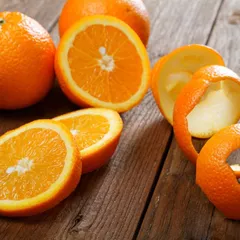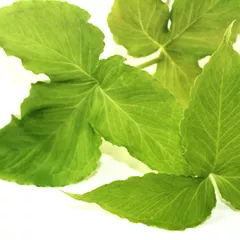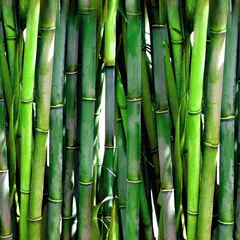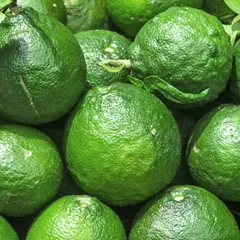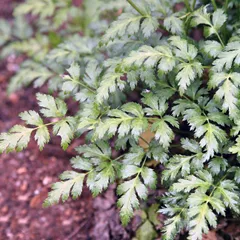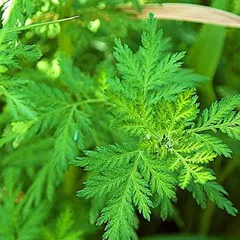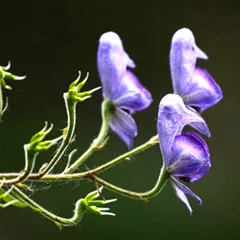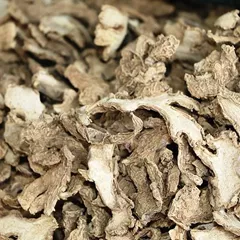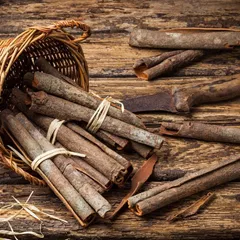Di Tan Tang
Di Tan Tang
Chinese: 涤痰汤
Pinyin: Dí Tán Tāng
Other names: Scouring Phlegm Decoction, Scour Out Phlegm Decoction,
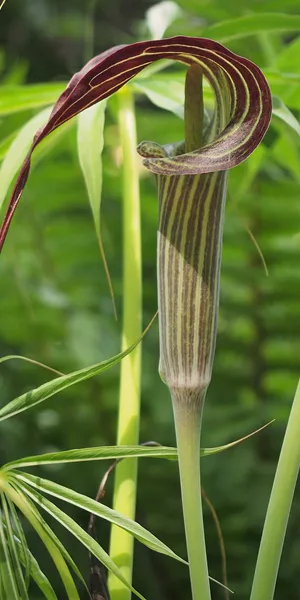
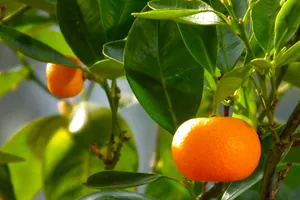
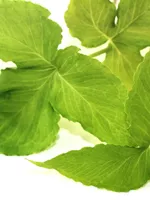
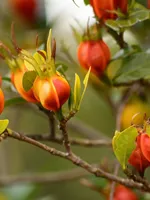




Di Tan Tang
Di Tan Tang
Chinese: 涤痰汤
Pinyin: Dí Tán Tāng
Other names: Scouring Phlegm Decoction, Scour Out Phlegm Decoction,
Number of ingredients: 9 herbs
Formula category: Formulas that dispel Phlegm
Conditions for which it may be prescribed: Motor aphasiaBronchiectasisSeizure disorder and six other conditions
- Removes Phlegm
- Opens the sensory orifices
- Tonifies Qi
Contraindications: Contraindicated for pregnant women or weak patients.
Source date: 1470 AD
Source book: Fine Formulas of Wonderful Efficacy
The information provided here is not a replacement for a doctor. You shouldn't use it for the purpose of self-diagnosing or self-medicating but rather so you can have a more informed discussion with a professional TCM practitioner.
Di Tan Tang is a 9-ingredient Chinese Medicine formula with Arisaema (Tian Nan Xing) and Red Tangerine Peel (Ju Hong) as principal ingredients.
Invented in 1470 AD, it belongs to the category of formulas that dispel Phlegm. Its main actions are: 1) removes Phlegm and 2) opens the sensory orifices.
In Chinese Medicine health conditions are thought to arise due to "disharmonies" in the body as a system. These disharmonies are called "patterns" and the very purpose of herbal formulas is to fight them in order to restore the body's harmony.
In this case Di Tan Tang is used by TCM practitioners to fight patterns like Phlegm Misting the Heart or Heart Vessel obstructed. From a Western Medicine standpoint, such patterns can give rise to a range of conditions such as cerebrovascular accident, seizure disorder or motor aphasia for instance.
On this page, after a detailed description of each of the nine ingredients in Di Tan Tang, we review the patterns and conditions that Di Tan Tang helps treat.
The nine ingredients in Di Tan Tang
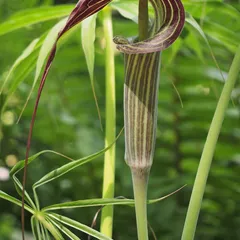
Tian Nan Xing is a king ingredient in Di Tan Tang. Like the name indicates, it means it has more power than other ingredients in the formula.
1. Arisaema (Tian Nan Xing)
Tian Nan Xing expels Phlegm due to Dampness and thereby removes the root of any related patterns. It can also disperse Wind so as to treat Phlegm blocking the vessels and channels.
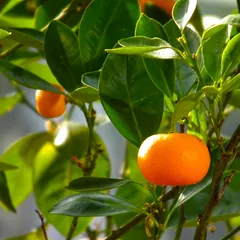
Ju Hong is a king ingredient in Di Tan Tang. Like the name indicates, it means it has more power than other ingredients in the formula.
2. Red Tangerine Peel (Ju Hong)
In general Ju Hong's main actions are as follows: "Dissipates Cold, dries Dampness, eliminates Phlegm and promotes the flow of Qi"
In the context of Di Tan Tang, it is used because it regulates Qi and dries Dampness.
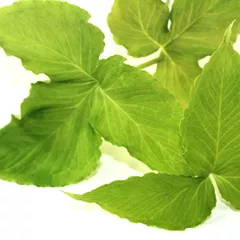
Ban Xia is a deputy ingredient in Di Tan Tang. This means it helps the king ingredient(s) treat the main pattern or it serves to treat a coexisting pattern.
3. Crow-Dipper Rhizomes (Ban Xia)
Part used: Dried rhizome and tuber
Nature: Warm
Taste(s): Pungent
Ban Xia acrid and warming. It is good at drying Dampness and transforming Phlegm. It also directs the rebellious Qi downward and warms the Stomach.
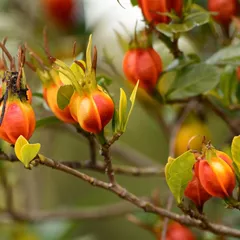
Zhi Zi is an assistant ingredient in Di Tan Tang. This means that it either serves to reinforces the effect of other ingredients or it moderates their toxicity.
4. Cape Jasmine Fruits (Zhi Zi)
Part used: Dried ripe fruit
Nature: Cold
Taste(s): Bitter
Meridian affinity: GallbladderHeartLungSanjiao
Category: Herbs that clear Heat and purge Fire and/or clear Summer Heat
In general Zhi Zi's main actions are as follows: "Clears Heat and calms spirit. Drains Damp-Heat affecting the Liver and Gallbladder. Clears Heat in the Blood and stops bleeding. Anti-inflammatory."
In the context of Di Tan Tang, it is used because it breaks up Stagnation and transforms Phlegm.
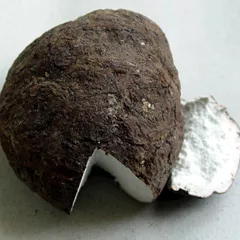
Fu Ling is an assistant ingredient in Di Tan Tang. This means that it either serves to reinforces the effect of other ingredients or it moderates their toxicity.
5. Poria-Cocos Mushrooms (Fu Ling)
Part used: Dried sclerotium
Nature: Neutral
Taste(s): Sweet
Meridian affinity: HeartKidneyLungSpleen
Category: Herbs that drain Dampness
In general Fu Ling's main actions are as follows: "Encourages urination and drains Dampness. Tonic to the Spleen/Stomach. Assists the Heart and calms the Spirit."
In the context of Di Tan Tang, it is used because it strengthens the Spleen by draining Dampness.
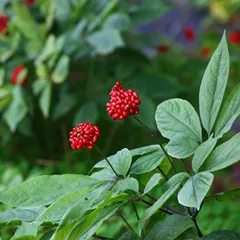
Ren Shen is an assistant ingredient in Di Tan Tang. This means that it either serves to reinforces the effect of other ingredients or it moderates their toxicity.
6. Ginseng (Ren Shen)
Part used: Dried root
Nature: Warm
Meridian affinity: HeartLungSpleen
Category: Tonic herbs for Qi Deficiency
Ren Shen tonifies the Qi so as to strengthen the Spleen to prevent any Phlegm accumulation or recurring. It is because the Spleen is often the origin of any Phlegm related pathologies.
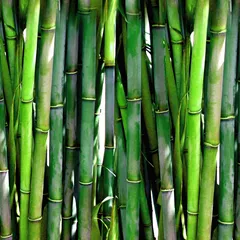
Zhu Ru is an assistant ingredient in Di Tan Tang. This means that it either serves to reinforces the effect of other ingredients or it moderates their toxicity.
7. Bamboo Shavings (Zhu Ru)
Part used: Dried middle shavings
Nature: Cool
Taste(s): Sweet
Meridian affinity: GallbladderStomachLung
Zhu Ru transforms Phlegm. It is also slightly cooling in nature so that it can balance the warming properties of most of the other ingredients of the formula.
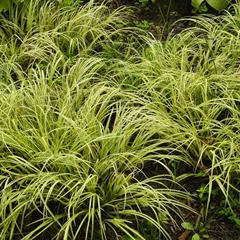
Shi Chang Pu is an assistant ingredient in Di Tan Tang. This means that it either serves to reinforces the effect of other ingredients or it moderates their toxicity.
8. Sweetflag Rhizomes (Shi Chang Pu)
Part used: Dried rhizome
Nature: Warm
Taste(s): Bitter
Meridian affinity: StomachHeartLiver
Category: Herbs that open the Orifices
Shi Chang Pu not only transforms Phlegm due to Dampness, but also aromatically opens up the orifices, directing the formula into the Heart Channel.
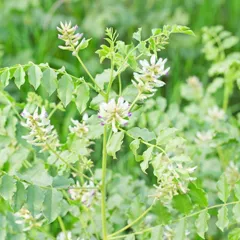
Gan Cao is an assistant ingredient in Di Tan Tang. This means that it either serves to reinforces the effect of other ingredients or it moderates their toxicity.
9. Liquorice (Gan Cao)
Part used: Dried root and rhizome
Nature: Neutral
Taste(s): Sweet
Meridian affinity: HeartLungSpleenStomach
Category: Tonic herbs for Qi Deficiency
Gan Cao harmonizes the actions of the other ingredients and the functions of the Middle Burner. It also counteracts the toxicity of the key and deputy ingredients as well as promoting Qi dispersion throughout the Triple Burner.
Conditions and patterns for which Di Tan Tang may be prescribed
It's important to remember that herbal formulas are meant to treat patterns, not "diseases" as understood in Western Medicine. According to Chinese Medicine patterns, which are disruptions to the body as a system, are the underlying root cause for diseases and conditions.
As such Di Tan Tang is used by TCM practitioners to treat two different patterns which we describe below.
But before we delve into these patterns here is an overview of the Western conditions they're commonly associated with:
Cerebrovascular accident Seizure disorder Motor aphasia Bronchial asthma Chronic obstructive pulmonary disease Acute bronchitis Chronic bronchitis Bronchiectasis Multiple sclerosis
Again it wouldn't be correct to say "Di Tan Tang treats cerebrovascular accident" for instance. Rather, Di Tan Tang is used to treat patterns that are sometimes the root cause behind cerebrovascular accident.
Now let's look at the two patterns commonly treated with Di Tan Tang.
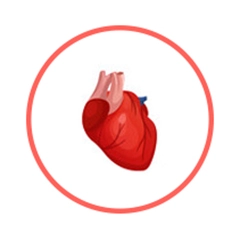
The Heart is a so-called "Zang" Organ. Learn more about the Heart in Chinese Medicine
Phlegm Misting the Heart
Pulse type(s): Slippery (Hua)
Tongue coating: Sticky coating, Thick coating
Tongue shape: Swollen
Symptoms: Coma Aphasia Vomiting Dull eyes Paralysis Slurred speech Unconsciousness Mental confusion Staring at walls Sudden blackouts Incoherent speech Mental depression Muttering to oneself Rattling sound in the throat Lethargic and withdrawn state Abnormal and foolish behavior
Di Tan Tang is sometimes prescribed by TCM practitioners to treat Phlegm Misting the Heart. This pattern leads to symptoms such as mental confusion, unconsciousness, lethargic and withdrawn state and incoherent speech. Patients with Phlegm Misting the Heart typically exhibit slippery (Hua) pulses as well as Thick sticky slippery white coating, swollen tongue, midline crack until the tip of the tongue.
This pattern is also called 'Cold Phlegm or Mucus Obstructing the Heart Orifices'. It is similar to the pattern of 'Phlegm Fire harassing the Heart' (also called 'Hot Phlegm or Mucus Obstructing the Heart orifices'), but it is a Cold Pattern here.
Children can have this pattern and it is often... read more about Phlegm Misting the Heart

The Heart is a so-called "Zang" Organ. Learn more about the Heart in Chinese Medicine
Heart Vessel obstructed
Pulse type(s): Choppy (Se), Knotted (Jie), Slippery (Hua), Wiry (Xian)
Symptoms: Phlegm Depression Heart pain Chest pain Purple lips Purple face Palpitations Purple nails Restlnessness Frequent sighing Aversion to speak Shortness of breath Cold hands and feet Feeling of heaviness Feeling of oppression of the chest
Di Tan Tang is sometimes prescribed by TCM practitioners to treat Heart Vessel obstructed. This pattern leads to symptoms such as palpitations, shortness of breath, depression and restlnessness. Patients with Heart Vessel obstructed typically exhibit choppy (Se), knotted (Jie), slippery (Hua) or wiry (Xian) pulses.
This is a complicated pattern as it is the combination of four other patterns and their features at the same time: Phlegm, Heart Blood Stagnation, Heart Qi Stagnation, and Cold.
If Phlegm is the dominant one out of the above four patterns, the pulse is rather Slippery instead of Wiry, Choppy or... read more about Heart Vessel obstructed
Formulas similar to Di Tan Tang
Liu Jun Zi Tang is 44% similar to Di Tan Tang
Wen Dan Tang is 44% similar to Di Tan Tang
Xiang Sha Liu Jun Zi Tang is 44% similar to Di Tan Tang
Huang Lian Wen Dan Tang is 44% similar to Di Tan Tang
Hao Qin Qing Dan Tang is 40% similar to Di Tan Tang
Hui Yang Jiu Ji Tang is 36% similar to Di Tan Tang



